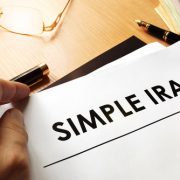Why Do Some Investors Use a Self-Directed SEP IRA?
The SEP IRA, or Simplified Employee Pension plan IRA, is essentially a way for employers to put aside money for their employee’s retirement. Think of it as an easy way to create a retirement benefit within your company. However, even if you do have a small company—or even a company of one—it can be an intriguing way to put aside money for one’s own retirement. But what is the SEP IRA, and how does it work? What sorts of questions will interested investors need to ask about it? Let us take a closer look at the Self-Directed SEP IRA and all that it entails.
What is a Self-Directed SEP IRA?
A Simplified Employee Pension IRA is a low-cost retirement plan in which contributions up to a certain amount will be tax-deductible. Why is it called the SEP IRA? If you are self-employed, after all, you can still put aside money for retirement. So, what is going on there? Well, in that situation, you are considered the employee. For that reason, individuals with Single Member LLCs or Sole Proprietorships will use the Self-Directed SEP IRA.
As the IRS notes, “A SEP plan allows employers to contribute to Traditional IRAs (SEP-IRAs) set up for employees. A business of any size, even self-employed, can establish a SEP.” Although the name—setting up a pension plan—sounds complicated, it is actually quite a simple way to put money aside for retirement, even if you have a company of one.
What Does it Mean to Self-Direct?
If you have read a lot of the content here at American IRA, then you know that self-directing your retirement account enables you to make your own investment decisions, provided those investment decisions fit within the regulations established by the government. For example, you can invest in real estate within a Self-Directed SEP IRA, which is not usually an investment that many people associate with tax protections. Of course, doing so means that you will have to know the rules of real estate investing within a retirement account. The same is true for anyone who ever invests in retirement accounts, but with the Self-Directed IRA, you are more likely to have the freedom to run into those rules, which is why it is so important that investors know their limits.
What does this mean in practical terms? It means that you get to call the shots. If you want to invest retirement funds within a retirement account in precious metals, you can, provided that you meet the rules. The same applies for a wide range of assets, including:
- Real estate, including commercial real estate, raw land, and rental properties for purposes of investing.
- Promissory notes, or loans.
- Private equity in private companies.
- Tax liens.
Of course, that’s just a selection of what’s available when you self-direct.
One reason that many people choose to self-direct with a SEP IRA is that a SEP IRA has such high contribution limits, depending on the kind of income you earn in your business. With those high contribution limits, you might feel at liberty to use retirement funds towards an investment property such as a piece of rental real estate. With more contributions come more options in the retirement account.
But the truth is, the decision is up to every investor. We are a Self-Directed IRA administration firm, so we do not offer specific investment advice. Rather we serve as the custodian on the account, helping to manage the paperwork and administration of a Self-Directed SEP IRA, but not the decisions made in it. Those decisions remain up to you.
Interested in learning more about Self-Directed IRAs? Contact American IRA, LLC at 866-7500-IRA (472) for a free consultation. Download our free guides or visit us online at www.AmericanIRA.com.











